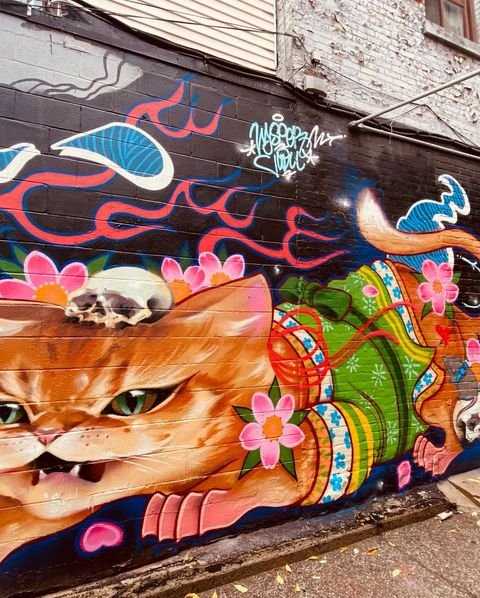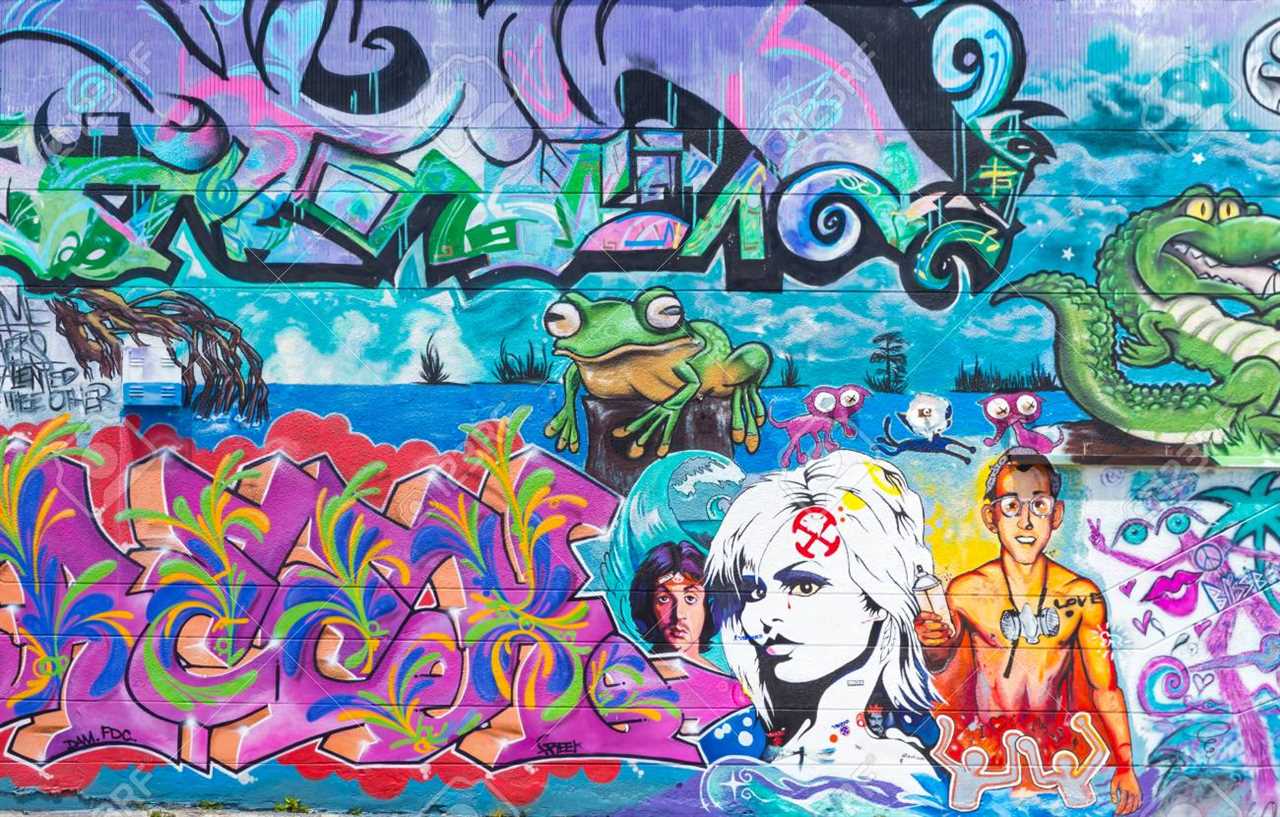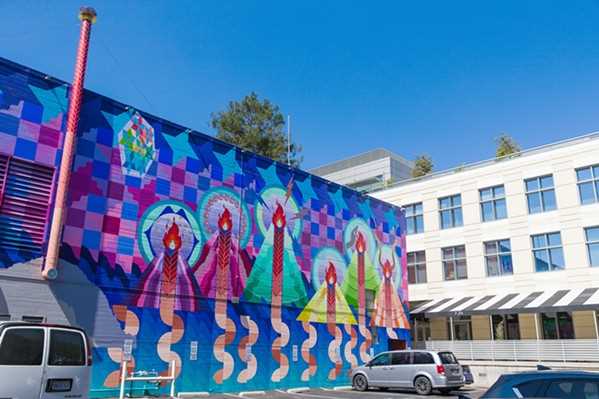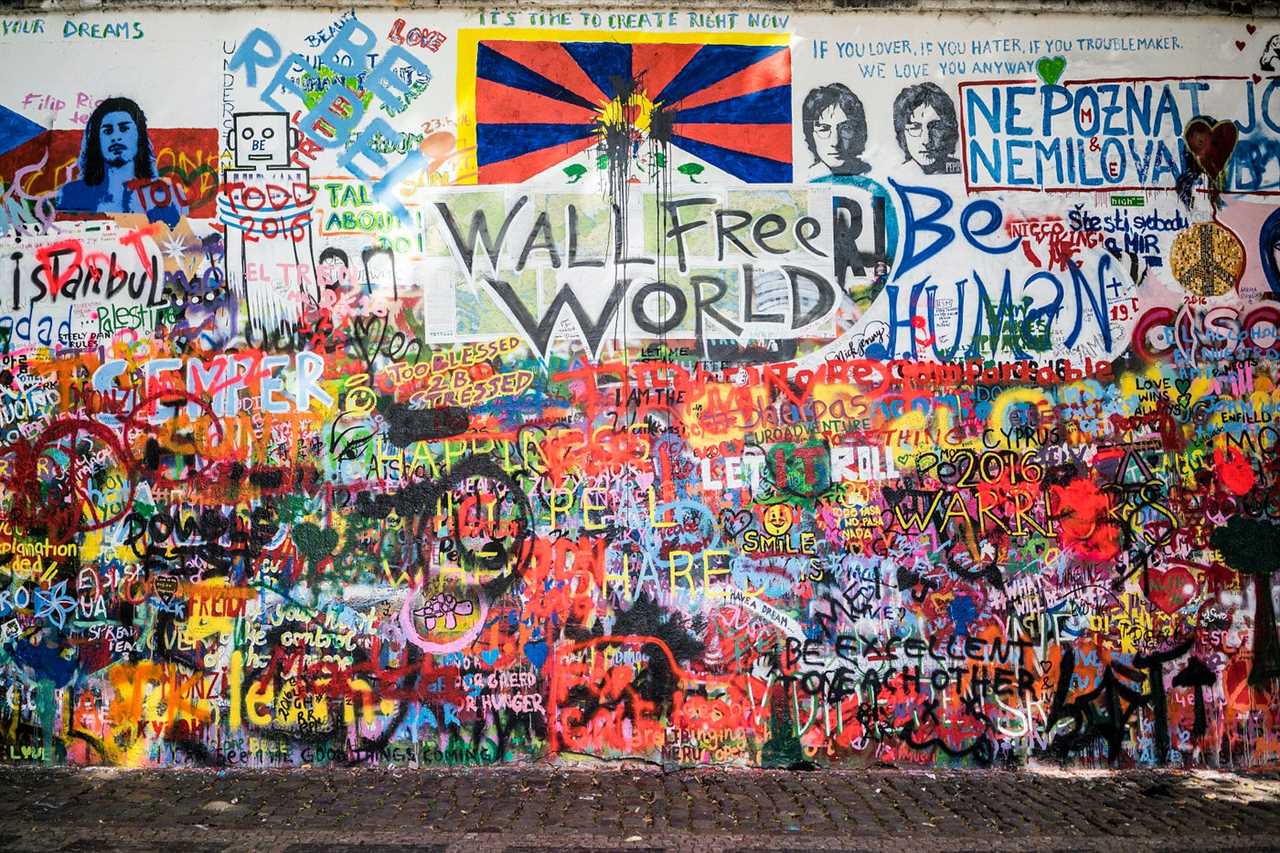
Street art is a vibrant and dynamic form of artistic expression that has gained significant popularity in urban environments around the world. Emerging from the underground, street art is a powerful medium that allows artists to break free from the constraints of traditional art galleries and connect directly with the public.
One of the defining features of street art is its ability to transform ordinary city landscapes into visually striking and thought-provoking works of art. From large-scale murals to intricate stencil designs, street artists use the walls and surfaces of buildings as their canvas, turning once drab and uninspiring spaces into vibrant and engaging masterpieces.
What sets street art apart from other forms of art is its inherent connection to the surrounding environment and the communities in which it is created. Street artists often draw inspiration from their surroundings, incorporating local landmarks, culture, and social issues into their works. This integration of art and community creates a unique and powerful form of expression, allowing the artist to communicate directly with the people who live and work in the area.

Street art is a powerful form of expression that allows artists to convey their thoughts, emotions, and opinions to a wide audience. The streets become their canvas, and through their art, they can tell stories, raise awareness, and challenge societal norms.
Artists use various techniques and mediums to create their works. From stencils and spray paint to murals and installations, each artwork is unique and carries a message. These expressions can range from political statements to personal reflections, encompassing a diverse range of themes and subjects.
Breaking Boundaries

Street art breaks the boundaries of traditional art forms and challenges the notion of the art world. It is often seen as an act of rebellion, as artists reclaim public spaces to share their art. By choosing the streets as their gallery, they bypass the limitations of formal institutions and reach a broader audience.
Moreover, street art blurs the line between art and vandalism. While some view it as illegal graffiti, others embrace it as a legitimate art form that adds vibrancy to urban environments. It encourages dialogue and provokes thought, stirring emotions in those who encounter it.
A Voice for the Marginalized

Street art also serves as a voice for the marginalized and overlooked members of society. Artists often use their art to shed light on social issues, such as poverty, inequality, and discrimination. By painting murals and creating installations, they bring attention to these issues, challenging the status quo and pushing for change.
| Advantages of Expression Through Art | Disadvantages of Expression Through Art |
|---|---|
| Allows for freedom of expression | Can be seen as vandalism |
| Reaches a broad audience | May attract unwanted attention |
| Raises awareness on social issues | Can be subject to censorship |
| Inspires dialogue and thought | May face legal consequences |
Artists and their Urban Canvas

Street artists use various materials and techniques to create their work. They often use spray paint, stencils, and stickers to create bold and striking images that stand out in the urban landscape. Some artists also incorporate other materials such as posters, sculptures, or even interactive installations to engage with viewers.
One of the reasons why artists are drawn to the urban environment is the sense of freedom it provides. Unlike traditional art forms that are confined to galleries or museums, street art allows artists to create in public spaces without the need for permission or approval. This gives them the freedom to express their opinions, challenge social norms, and spark conversations.
| Artist | City | Style |
|---|---|---|
| Banksy | Bristol, UK | Stencil graffiti |
| Shepard Fairey | Los Angeles, USA | Street art |
| Os Gemeos | São Paulo, Brazil | Mural art |
| Swoon | New York City, USA | Wheatpaste |
Throughout history, street art has been a platform for marginalized communities and underrepresented voices. It has served as a means of protest, storytelling, and cultural expression. Many artists use their work to bring attention to social issues, challenge political systems, and convey messages of hope and unity.
Artists who engage in street art often face legal challenges and criticism from the public. However, their passion for creating art in public spaces continues to thrive, and their works have become an integral part of urban landscapes around the world.
The Evolving Street Art Culture

The street art culture has evolved significantly over the years, transforming from a subversive form of expression to a recognized and celebrated art form. Street art has become more mainstream, with artists gaining recognition and opportunities to showcase their work in galleries and museums.
One of the key aspects of the evolving street art culture is the growing acceptance and appreciation of the art form by the general public. What was once seen as vandalism is now often viewed as a creative and meaningful way to transform public spaces. This shift in perception has led to more support for street art initiatives and a greater understanding of its cultural significance.
Another important aspect of the evolving street art culture is the increasing collaboration between street artists and other art forms. Street art has influenced and been influenced by various artistic disciplines, such as music, fashion, and design. This cross-pollination of ideas has resulted in innovative and dynamic artwork that pushes the boundaries of traditional art forms.
Technology has also played a role in the evolution of street art culture. With the advent of social media and digital platforms, street artists have been able to reach a wider audience and gain international recognition. Artists can now share their work instantly with the world, connecting with other artists and enthusiasts across the globe.
| Benefit | Explanation |
|---|---|
| Global Recognition | Street artists can now gain international recognition and exposure through social media and online platforms. |
| Increased Collaboration | Street artists are collaborating with artists from other disciplines, resulting in innovative and interdisciplinary artwork. |
| Public Acceptance | Street art is now more accepted and appreciated by the general public, leading to more support and opportunities for artists. |
| Transformed Public Spaces | Street art has the power to transform mundane public spaces into vibrant and engaging environments. |
The Intricacies of Graffiti

Graffiti is more than just spray paint on walls; it is an intricate art form that has its own set of unique characteristics and complexities. From its origins as a form of expression for marginalized communities to its evolution as a global art movement, graffiti has a rich and varied history that is often misunderstood.
The Role of Street Art

Graffiti is often associated with urban environments and is seen as a form of rebellion against established norms and authority. Street artists use their medium to challenge societal norms, express political dissent, and highlight social issues. By taking their art to public spaces, they aim to disrupt the status quo and engage with the community.
The Aesthetics of Graffiti

Graffiti is known for its vibrant colors, bold lines, and intricate designs. Artists use a variety of techniques and materials to create their works, ranging from stencils and free-hand sketches to elaborate murals. The aesthetic appeal of graffiti lies in its ability to transform everyday objects and spaces into visually striking and thought-provoking art installations.
| Key Elements | Description |
|---|---|
| Tags | Individualized signatures or monikers used by graffiti artists to claim their presence and establish their identity in the urban landscape. |
| Throw-ups | Simple and quick graffiti pieces typically consisting of bubble letters or blocky shapes, often used for quick and widespread tagging. |
| Pieces | More elaborate and detailed graffiti works that require time and effort, often showcasing the artist’s technical skills and creativity. |
| Murals | Larger-scale and highly elaborate graffiti works that often tell a story or convey a message, typically created with permission from property owners. |
The intricacies of graffiti extend beyond its visual elements. Graffiti art also carries a certain level of risk and controversy as artists often face legal consequences for their work. However, this does not deter graffiti artists from pursuing their passion and using the streets as their canvas. The ever-evolving nature of graffiti reflects the resilience and creativity of street artists, making it a captivating and influential aspect of modern culture.
Exploring the Urban Landscape

As one wanders through the bustling streets of a city, there is an undeniable energy that engulfs the urban landscape. Every corner holds a story, and every wall tells a tale. Street art has become an integral part of the visual tapestry of these busy metropolises, seamlessly blending with the concrete and steel.
Exploring the urban landscape means immersing oneself in the vibrant world of sight and sound, where creativity knows no bounds. From towering buildings adorned with colorful murals to hidden alleyways showcasing intricate graffiti, every nook and cranny of the city unveils a piece of artistic expression.
The urban landscape provides a canvas for artists, both local and international, to unleash their creativity and share their perspectives with the world. No longer confined to traditional galleries, street art captures the attention of passersby and sparks conversations about social issues, cultural identity, and the very essence of humanity.
Walking through the city streets, one may stumble upon a whimsical piece of art that brings a smile to their face, or a thought-provoking masterpiece that leaves them contemplating the meaning of life. The urban landscape becomes an open-air museum, inviting everyone to become a part of this ever-evolving artistic narrative.
But exploring the urban landscape goes beyond admiring the art itself – it is about taking a closer look at the context in which it exists. Street art often emerges from the marginalized communities of cities, providing a voice for those who have been silenced by societal norms. It challenges the status quo and challenges our perceptions of what art should be.
So, next time you find yourself amidst the hustle and bustle of city life, take a moment to explore the urban landscape. Look beyond the skyscrapers and storefronts, and you may just discover the hidden gems of creativity that make the city truly come alive.
The Impact of Street Art

Creative Expression and Empowerment

Street art provides a platform for artists to express their creativity and share their voice with the world. It allows them to reclaim public spaces and use art as a means of self-expression and empowerment. By challenging the traditional boundaries of art, street artists inspire others to think outside the box and embrace their own creativity.
Social Commentary and Awareness

Street art often serves as a medium for social commentary, tackling issues such as inequality, injustice, and environmental concerns. Artists use their work to raise awareness and spark conversations about these important topics. By placing their art in public spaces, they ensure that their messages reach a wider audience and encourage people to reflect on the issues at hand.
The impact of street art goes beyond just the art itself. It stimulates public discourse and encourages people to question the status quo. It challenges the notions of what art can be and where it can be found. Street art has the power to bring communities together, inspire change, and shape the cultural landscape of cities.

I am a mural enthusiast and a fervent admirer of street art. Rather than creating murals myself, I am passionate about collecting them. My love for street art knows no bounds. I am dedicated to curating and cherishing these artworks that grace the streets. My collection stands as a testament to my profound appreciation for this form of artistic expression.
read about me



